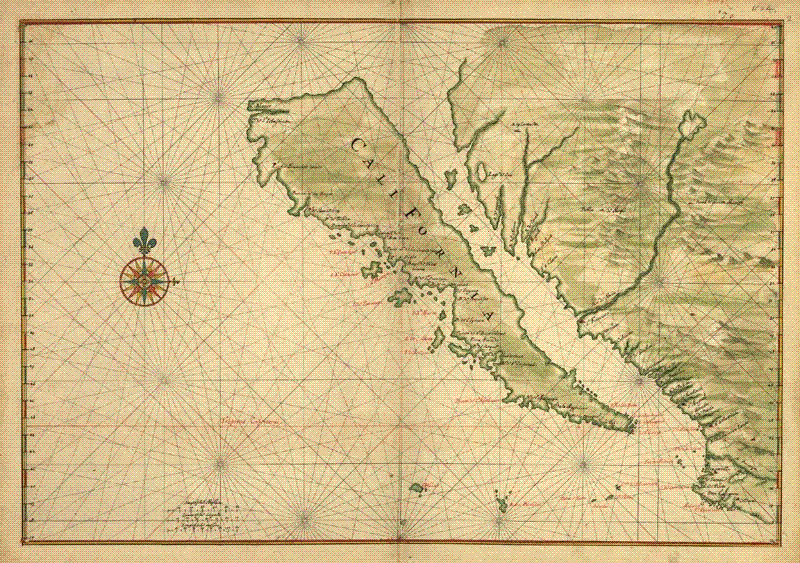|
||||||||||||||||||||||||||||||||||||||||
|
In the early sixteenth century, Spanish novelist Garcí Rodriguez Ordóñez de Montalvo published Las Sergas de Esplandáan (or The Adventures of Esplandían), a tale of a knight who undertakes a heroic journey to an improbable place. Know ye that on the right hand of the Indies there is an island called California, very near the Terrestrial Paradise and inhabited by black women without a single man among them and living in the manner of Amazons. They are robust of body, strong and passionate in heart, and of great valor. Their island is one of the most rugged in the world with bold rocks and crags. Their arms are all of gold, as is the harness of the wild beasts, which, after taming, they ride. In all the island there is no other metal. . .It may be that Spanish explorers, familiar with Las Sergas de Esplandián drew on it for the name California, whose golden promise was well anticipated by de Montalvo's work. |
|||||||||||||||||||||||||||||||||||||||
|
© 2000-2013 California Legacy Project, Santa Clara University English Department, Santa Clara University, 500 El Camino Real, Santa Clara, CA 95053.
For more information: Terry Beers, 408 554 4335, or . 



|
|

|








